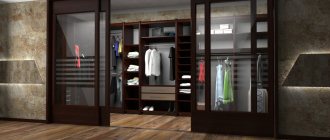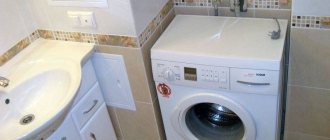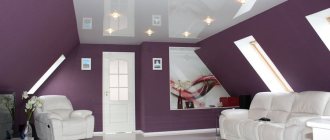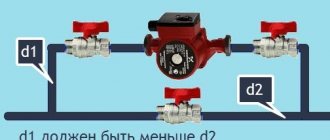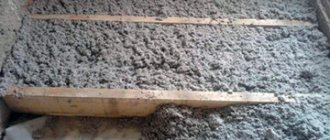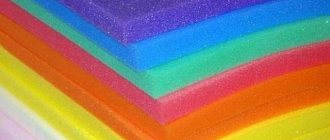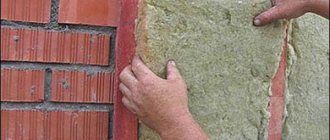Is it worth doing this kind of business?
Before purchasing equipment for the production of ecowool, you should figure out whether it is advisable to start such a business. So, the presented business has the following advantages:
— high payback, since the presented material is widely used for insulating buildings;
— for its production it is not necessary to buy too expensive raw materials;
— all ecowool components are environmentally friendly, as they are made from natural materials;
— the final product has a large number of useful properties, which makes it ideal for thermal and sound insulation of premises.
Frame insulation technology
Thermal insulation of a frame house is carried out using a dry or wet method. For application to walls, it is better to choose a “wet” technology; for floor insulation, a “dry” method is suitable.
Equipment for blowing ecowool
High-quality insulation of vertical surfaces is impossible without the use of specialized blow molding installations for installing ecowool. There are many different models on the market, differing in power, completeness and scope of application. Equipment for ecowool can be designed for both dry and wet methods.
Some craftsmen make the unit with their own hands. To make a blowing installation with your own hands, you need to understand the principle of constructing the equipment. Required working nodes:
- Platform. A frame for fixing a loading funnel with a motor, a blower, a sluice and a gearbox.
- Engine. Use a two- or three-stage motor.
- Gateway. Provides cotton wool capture and air dosage. Inside the chamber, the material is turned over and fed into the hose under pressure.
- Gearbox. Increases power output by reducing the speed of the ripper and motor.
- Baking powder. A system of knives like in a blender for fluffing and preparing the mass.
- Loading funnel for laying insulation.
- Control Panel.
The described complete set corresponds to the dry spray unit. To implement the wet-glue method, you will need a block for moistening the cellulose briquette.
Thermal insulation of the house: wet method
The technology is great for application to open areas. The method allows you to control the uniformity of laying and ensures a high density of the thermal insulation layer. Cellulose wool is fed under pressure and adheres to the surface. High adhesion is ensured by lignin - it is released when water is added to ecowool.
Work progress:
- Lath the walls.
- Fill the hopper with the fluffy mass.
- Start spraying. At the exit, dry cotton wool from the nozzle is moistened and supplied under pressure.
- Distribute ecowool evenly over the surface of the walls.
- Wait until it dries completely and cut off the excess - the waste can be reused.
Useful: Penoplex - extruded material for home insulation
“Dry” filling of wall space
The waterless method can be implemented on horizontal and inclined surfaces. Spraying is used to insulate closed cavities, non-demountable structures, and interfloor ceilings.
The essence of the method:
- At the top of the wall, make a hole commensurate with the dimensions of the insulation supply hose.
- Insert the sleeve and turn on the equipment.
- Fill the voids, periodically tamping the dry mass.
- Close and seal the hole.
Blowing into the cavity is carried out regardless of weather conditions and avoids the dismantling of structures. However, the technique has several significant drawbacks - it is difficult to ensure uniform distribution and the required thermal insulation density.
Manual filling of floors
The easiest way is to insulate the ceiling or floor. The technology does not require specialized equipment, but takes more time. The method is only suitable for thermal insulation of horizontal surfaces.
Do-it-yourself backfilling sequence:
- Level the surface, install the logs - the height of the boards is 8 cm, the approximate size of the cells is 40*80 cm.
- Fluff the compressed briquette well. Place the mixture in a large container and mix vigorously with a drill and mixer attachment.
- Fill the space between the joists with insulation. There should be an abundance of ecowool - a small pile of dry material will subsequently cover the floorboards.
Experts advise letting the cellulose wadding “settle.” The lignin included in its composition will react with moist air vapor and a dense crust will form on the surface of the insulation. The layer will improve heat retention.
What raw materials are used for the work?
Equipment for the production of ecowool is a very important part of your future workshop. However, without the raw materials there can be no final product. For the manufacture of the presented material the following is used:
- boric acid;
- sodium tetraborate;
- secondary cellulose.
Each component does its job. Cellulose is the basis of future insulation. Boric acid prevents fungi from multiplying, as it has antiseptic properties. Sodium tetraborate ensures the material's resistance to combustion.
What does the production line include?
Today there is no need to buy separate machines to organize your business. From modern manufacturers you can purchase an ecowool production line, which includes all the necessary equipment.
In addition, it is fully automated, which reduces the need for large numbers of personnel. You will only need those people who will control the process, handle loading and unloading, as well as transporting raw materials and finished products.
So, equipment for the production of ecowool includes the following set of machines:
1. Shredder. This device is used for sorting cellulose.
2. Conveyor belts that move raw materials between machines.
3. Dispensers. Thanks to them, you can accurately set the amount of each component.
4. Dispersant. This apparatus is used to separate raw materials, grind them and dry them.
5. Fan. It is used for final drying of the finished product.
6. Device for packaging ecowool.
With this line you can produce about 800 kg of product per hour. It all depends on its power. Naturally, this indicator is decisive in the choice of equipment. Naturally, we should not forget about quality. Therefore, do not buy equipment from unknown locations.
Features of homemade ecowool
In principle, in order to open such a production, it is not at all necessary to build or rent a separate workshop. At first, you can do this even at home (naturally, not in residential premises).
To work, you will need raw materials, as well as several units. At the same time, it is not difficult to make equipment for the production of ecowool with your own hands. For example, an activator washing machine can be used as a shredder. Its peculiarity is that it has a rotation mechanism to which a system of knives is attached. If you don't like the power of your homemade device, then you can install a more powerful motor.
It should be noted that products manufactured in this way are most suitable for personal use. It is inferior in quality to industrially produced ecowool; in addition, it is not recommended to use it without treatment with chemicals. Therefore, if you want to open a business, it is better to purchase professional equipment.
Controversial point: the pros and cons of thermal insulation
Despite the good technical characteristics, insulating houses with ecowool is associated with some nuances. Let's evaluate the positive and negative aspects of using cellulose thermal insulation.
Advantages of eco-insulation
The main advantages of ecowool are:
- Absorption and evaporation. The material partially absorbs moisture, but at the same time retains its thermal insulation properties. With an increase in humidity by 25%, ecowool will lose up to 3-5% of its thermal efficiency.
- Seamless insulating layer. Blowing ecowool is possible in the most inaccessible places. A homogeneous mass fills all cracks and cavities without forming cold bridges.
- Environmentally friendly. The absence of harmful volatile compounds makes the insulation safe.
- Good sound insulation. Excellent noise absorption ability - a 15 mm layer suppresses 9 dB. Ecowool is often used to insulate recording studios, airports, and buildings near busy highways.
Useful: Tool for building a frame house.
An undeniable advantage is the relatively affordable cost. The approximate price of ecowool insulation is about 10 USD. per bag weighing 15 kg. However, it is worth considering that the total cost of thermal insulation will increase significantly due to the expensive technology of applying cotton wool.
Problems of using ecowool
The disadvantages of cellulose insulation include:
- Reduced thermal efficiency. Over time, thermal conductivity increases. The deterioration of thermal insulation properties is due to a decrease in the volume of the material and saturation with moisture. To maximize heat retention, it is necessary to ensure ventilation of the insulation and laying a layer of insulation with a reserve.
- Shrinkage. The problem is typical for vertical structures. To avoid the appearance of voids, it is necessary to apply cotton wool in a dense layer - at least 65 kg / cubic meter. m.
- Difficulties in installing ecowool. Achieving the required density and uniform distribution is possible only with the use of special machines for blowing ecowool.
- Low rigidity. Cellulose insulation, unlike slab materials (expanded polystyrene, basalt mats), cannot be installed using the frameless method.
Ecowool should not be placed near chimneys , fireplace pipes, or open fire sources. The insulation requires additional protection - this can be basalt foil mats or asbestos-cement slabs.
It should be noted that the quality of thermal insulation does not always meet the standards. The name of the manufacturer influences how much ecowool costs. Little-known companies, in an effort to save money, replace borax and borax with cheap flame retardant analogues. Insulation with ammonium sulfates and boric acid quickly loses its fire-fighting properties.

